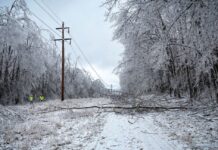 This is fifth in a series on how electricity is generated. The others covered clean-coal technology, nuclear, wind power and natural gas. Watch future issues for stories about other fuel sources.
This is fifth in a series on how electricity is generated. The others covered clean-coal technology, nuclear, wind power and natural gas. Watch future issues for stories about other fuel sources.
Biomass” consists of any biological material that can be burned as fuel to produce electricity, and it’s everywhere. A quick drive down a country road provides a virtual tour of this renewable energy resource: trees, grasses, crops, livestock waste, and even landfill gas. Recent advances in technology have made it possible to use tried-and-true biomass in more efficient ways.
Today, the U.S. has over 13,000 megawatts (MW) of biomass generating capacity, making it the third-largest source of renewable energy behind hydropower and wind.
How It Works
The basic premise behind this power source is simple: Burning actual biomass feedstock or methane gases produced by decomposition of organic material—in whatever form—creates steam, which then spins a turbine and generates electricity. Given the wide variety of biomass resources available, questions on what to burn and in what manner can be answered in a number of ways:
- Direct-fired systems: This remains the most straight-forward, time-tested means of producing electricity with biomass. Quite simply, material (like wood “slash” from timbering operations) is shoveled into a boiler to produce heat and steam. Residual heat from the process can be piped off to heat buildings or re-used in other ways, increasing plant efficiencies.
- Co-fired systems: This method adds biomass to existing fossil fuel-fired plants, mixing wood chips with coal, for example. In this way, fossil fuel plants can lower emissions of certain pollutants while maintaining the same electrical output.
- Gasification: Slightly more complex, this process converts biomass to a gas through superheating. The resulting synthetic gas (syngas) can be burned in a conventional boiler or used as a substitute for natural gas.
- Pyrolysis: This technical term describes changing solid biomass into a different form. If biomass is superheated in an area void of oxygen, it will not catch fire but instead will liquefy. The resulting oil can be burned to generate electricity or used in making plastics, adhesives and other products.
- Anaerobic digestion: Instead of burning biomass as fuel, this method amounts to piling up waste and waiting. As the name implies, bacteria (anaerobes) literally digest molecules in waste—be it livestock manure or garbage—and produce methane as a byproduct. The gas is then captured and burned to make electricity. Leftover material, in many cases, can be used as compost.
The Future of Biomass
Biomass has come a long way from putting a log on a fire. Applications continue to develop, many of which involve converting biomass to other forms to supplement petroleum use.
New sources of electricity and fuel production are researched every day, and soon, waste such as corn stover (stalks, leaves and husks) and wheat straw will be added to the mix. Non-food crops such as trees and grasses are also being researched for their energy-producing potential, especially in liquid form.
Scott Gates writes on consumer and cooperative affairs for the National Rural Electric Cooperative Association. Sources: U.S. Department of Energy, U.S. Energy Information Administration






Biomass Fuels are carbon free and pollution free.
One of the great advantage of using bio fuels is that they are renewable resources….
Biomass is the best renewable source of energy. Black coal,petrol and diesel were traditional source of energy it harms the environment while biomass briquettes are the perfect substitute to wood also..
So briquettes are the best…